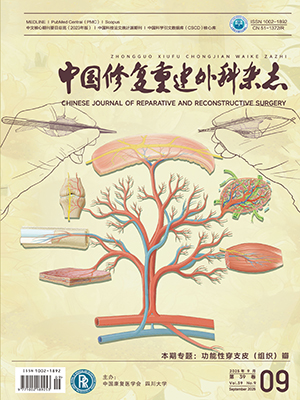To observe the collagen-hydroxylaptite composite in the repair of bone defect, ten minipigs were chosen to make a mandibular dafect measuring 2 cm in diameter and the composite was implanted, while the use of autogenous bone graft and the blank wese served as control. On the 4, 8, 12, 24 and 48 weeks after the operation, the animals were sacrificed and the samples were examined under light microscope. The result showed that: no infection or necrosis occurred. The composite coalesced with host bone and the outcome was similar to that of the autogenous bone graft. No foreign body giant cells or vacuum left from osteonecrosis was observed. It was suggested that the composite had the advantage of abundant supply, easy to handle and no harm. The biocompatibility was good and might be hopeful as a bone substitute.
Citation: Cheng Yuhua,Zhao Guangjun,Liu Haijun,et al.. HISTOLOGICAL EVALUATION OF COLLAGENHYDROXYAPATITE COMPOSITE AS OSSEOUS IMPLANTS IN THE REPAIR OF MANDIBULAR DEFECT. Chinese Journal of Reparative and Reconstructive Surgery, 1998, 12(2): 74-76. doi: Copy
Copyright © the editorial department of Chinese Journal of Reparative and Reconstructive Surgery of West China Medical Publisher. All rights reserved




